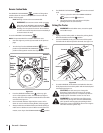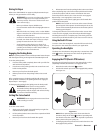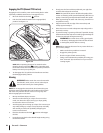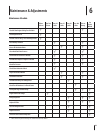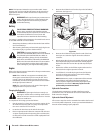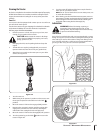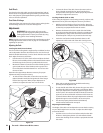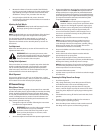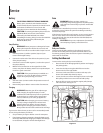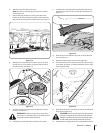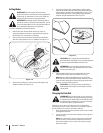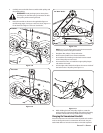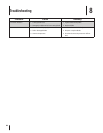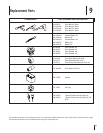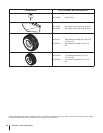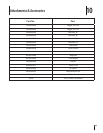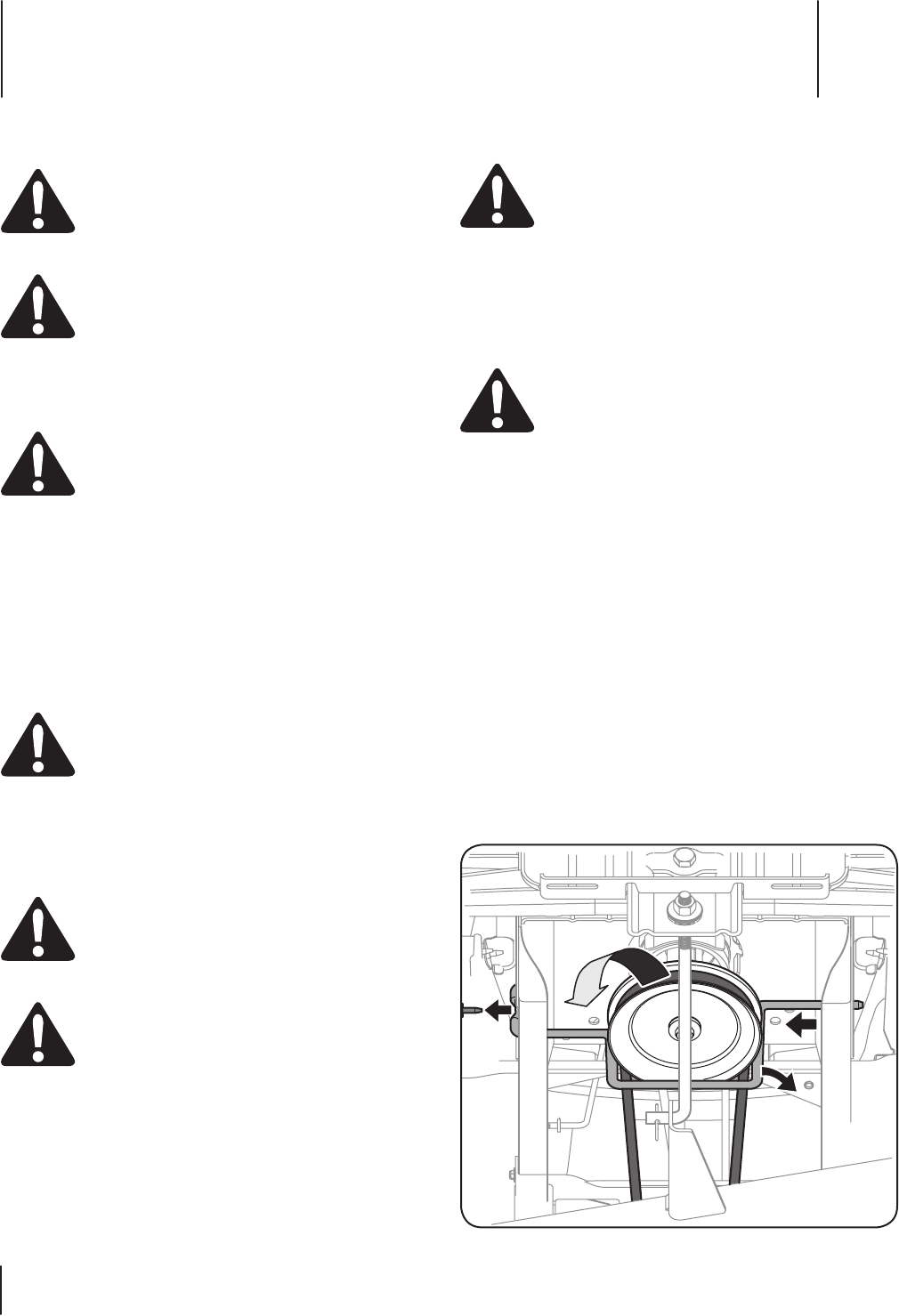
Se rvice
7
26
Battery
CALIFORNIA PROPOSITION 65 WARNING:
Battery posts, terminals, and related accessories
contain lead and lead compounds, chemicals known
to the State of California to cause cancer and
reproductive harm. Wash hands after handling.
CAUTION: If removing the battery, disconnect the
NEGATIVE (Black) wire from it’s terminal first,
followed by the POSITIVE (Red) wire. When
reinstalling the battery, always connect the POSITIVE
(Red) wire its terminal first, followed by the
NEGATIVE (Black) wire.
Jump Starting
WARNING! Never jump start a damaged or frozen
battery. Be certain the vehicles do not touch, and
ignitions are off. Do not allow cable clamps to touch.
1. Connect positive (+) cable to positive (+)post of your
tractor’s discharged battery.
2. Connect the other end of the cable to the positive (+) post
of the jumper battery.
3. Connect the second cable negative (–) to the other post of
the jumper battery.
4. Make the final connection on the engine block of the
tractor, away from the battery. Attach to an unpainted part
to assure a good connection.
CAUTION: If the jumper battery is installed on a
vehicle (i.e. car, truck), do NOT start the vehicle’s
engine when jump starting your tractor.
5. Start the tractor (as instructed in the Operation section of
this manual).
6. Remove the jumper cables in reverse order of connection.
Charging
WARNING! Batteries give off an explosive gas
while charging. Charge the battery in a well
ventilated area and keep away from an open flame
or pilot light as on a water heater, space heater,
furnace, clothes dryer or other gas appliances.
CAUTION: When charging your tractor’s battery,
use only a charger designed for 12V lead-acid
batteries. Read your battery charger’s Owner’s
Manual prior to charging your tractor’s battery.
Always follow its instructions and heed its warnings.
If your tractor has not been put into use for an extended period
of time, charge the battery as follows:
1. Set your battery charger to deliver a max of 10 amperes.
2. If your battery charger is automatic, charge the battery until
the charger indicates that charging is complete. If the charger
is not automatic, charge for no fewer than eight hours.
Fuse
WARNING! Before servicing, repairing, or
inspecting, always disengage PTO, set parking brake,
stop engine and remove key to prevent unintended
starting.
A 20 AMP fuse is installed in your tractor’s wiring harness to
protect the tractor’s electrical system from damage caused by
excessive amperage.
If the electrical system does not function, or your tractor’s engine
will not crank, check to be certain that the fuse has not blown.
It is located under the seat, attached to the POSITIVE (Red) wire
leading to the battery.
CAUTION: Always use a replacement fuse with the
same amperage capacity as the blown fuse.
Relays and Switches
There are several safety switches in the electrical system. If a
function of the safety interlock system described earlier is not
functioning properly, have the electrical system checked by your
authorized service dealer.
Cutting Deck Removal
To remove the cutting deck, proceed as follows:
1. Place the PTO in the disengaged (OFF) position and engage
the parking brake.
2. Lower the deck by moving the deck lift lever into the
bottom notch on the right fender.
3. For tractors with manual PTO’s continue with step 4, for
electric PTO models skip ahead to step 8.
4. Loosen, but do not remove the flange lock nut on the right
idler pulley and the hex screw on the left idler pulley.
5. Remove the hex screw securing the engine pulley keeper
rod to the frame. See Figure 7-1.
Figure 7-1



